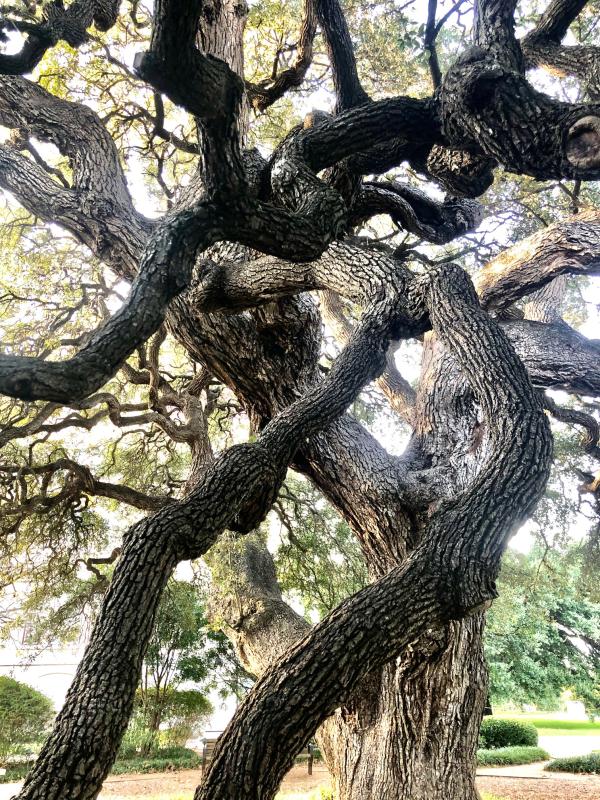Material Experts: Odditree

Material Expert Interviews - Odditrees
Ann Armstrong
Please tell us your title and relationship to materials.
Ann Armstrong: architect + former steel fabricator + current wood lover + diligent observer and documenter of peculiar trees (Odditree Society founder).
How has your relationship to materials changed over time?
AA: Early on, I focused on the tactile/functional qualities of materials. Now I'm more curious about and sensitive to a material's origin, i.e. how is it made + where it came from. My relationship with wood is definitely a complicated one. I like to integrate wood into built environments while I simultaneously cringe at the thought of cutting down trees...which construction certainly does in multiple ways. To shrink my own ecological footprint a few years ago, I designed and built a tiny house to live in--it was made almost entirely of wood--and was sheathed inside and out with cedar and cypress.. I loved coming home to the wood paneling and earthy scent--I was convinced it made the extremely compact space livable. Even so, if I rebuilt the same project today, I would reconsider how much wood I'd consume in the design of it, particularly for the exterior. I think if wood is used thoughtfully, a little can go a long way
How would you describe your day-to-day use of materials?
AA: Today I spend a much larger chunk of time observing and researching living trees than I spend working with wood. Even so, they're part of the same story/life cycle, and the more I learn about trees, the more energy I want to devote to protecting them and making appropriate wood choices.
Is there a material you most identify with, and if so - why?
AA: It used to be steel, but now it is most certainly wood. I appreciate the way grain visually holds genetic and contextual history, so even if you don't know the tree's species, where it came from, or how old it was when it was harvested, you're still able to "feel" the tree's lived story by looking at it.
What are your favorite resources to learn about new materials and methods, in the work that you do?
AA: First-hand observation, especially over time.
What is the most surprising (or striking) use of materials that you've come across in your work, research, or travels?
AA: I traveled to Japan last fall to study trees and was struck by the densely forested landscape, the country's environmental history (as it relates to deforestation and reforestation), and the spectacular and prolific architectural use of wood. Regarding older architecture, I began asking myself: why so much wood and so little stone? Googling lead me to the following explanations: humidity and mold are a huge issue and pre-HVAC wood construction allows for more air ventilation thanks to raised foundations and sliding screens. Other reasons often given are: lack of appropriate stones for successful masonry construction and the tendency for wood to perform better than stone during earthquakes. So what might initially feel like an aesthetic choice was originally born out of necessity.
**An important stop for craftspeople and wood nerds would be the Takenaka Carpentry Tools Museum in Kobe!
***For a deeper glimpse into local wood in the wild, check out the Odditree Society's guide to Austin's most peculiar trees.
--Many thanks to Ann for participating as a Materials Expert!

